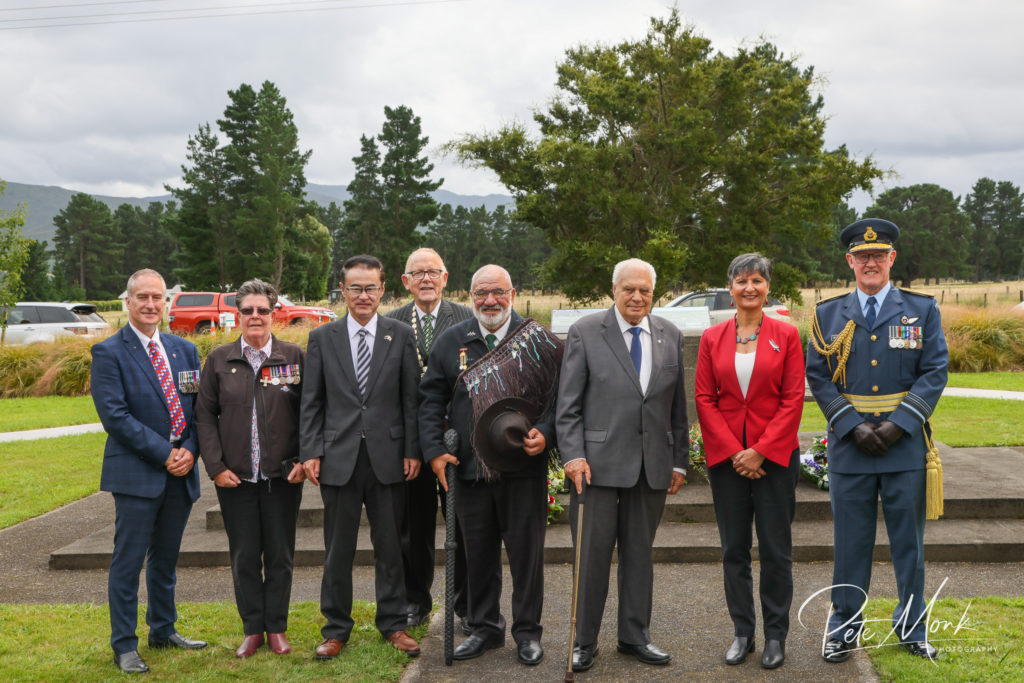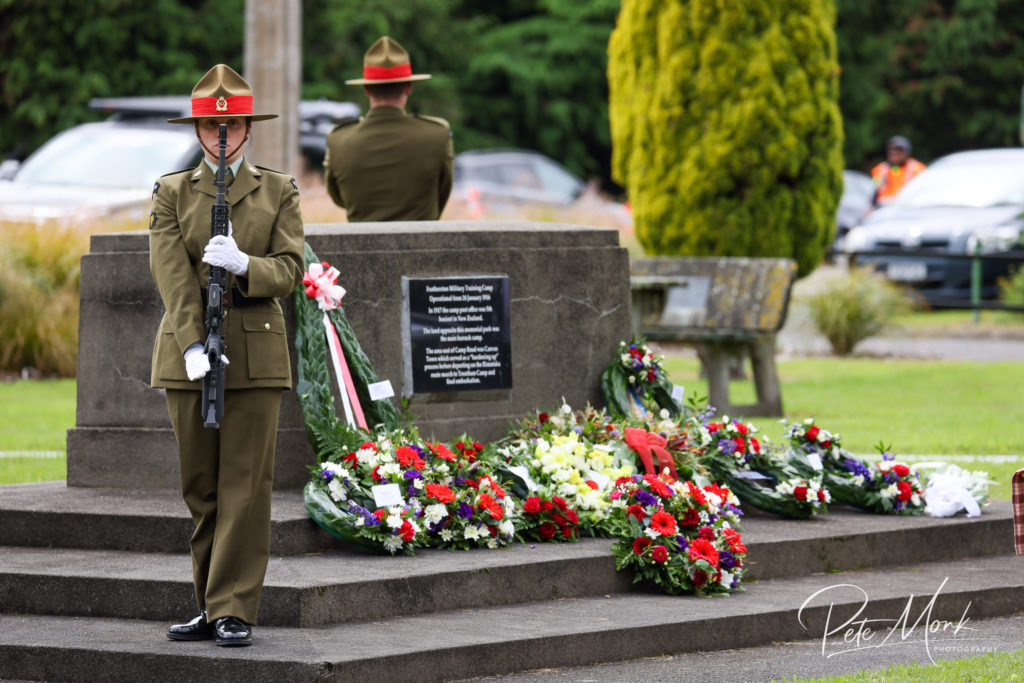Just outside the Wairarapa town of Featherston (Messines Layby near Tauherenikau), a memorial serves as a reminder of a Second World War incident that resulted in the deaths of 48 Japanese prisoners of war (POWs) and one New Zealand guard, with many wounded. The date was 25 February 1943.
Eighty years later on a lovely Saturday morning, Japan’s Acting Ambassador Mr Tatsushi Nishioka and the Australian High Commissioner Harinder Sidhu joined South Wairarapa District Mayor Martin Connelly, the Wairarapa Member of Parliament (MP), Kieran McAnulty and around 100 guests to mark the 80th anniversary of the “Featherston incident” near what used to be the Featherston military camp.
Although the military camp is no more, a memorial has been created at the layby to honour both New Zealand soldiers and the Japanese POWs.
Historians write that on Thursday 25 February 1943, a group of recently arrived prisoners refused to work and staged a sit-down strike. Lieutenant James Malcolm, who was in charge at the scene, fired a warning shot, which may have wounded Lieutenant Adachi Toshio. The prisoners then rose to their feet and the guards opened fire. The incident took less than 30 seconds.
As a result of ricocheting friendly fire six guards were also wounded and a seventh, Private Walter Pelvin, died of his injuries 3 days later. Local historian, Neil Frances spoke to the background and history of the Incident.
Saturday, 25 February’s ceremony was presided over by the Featherston RSA President, Peter Jackson. After a moving welcome by mana whenua led by Matua Abe Matenga, a karakia from local kaumatua, Matua Wiremu Dawson, and speeches from officials, wreaths were laid on behalf of all three countries, Ministry of Defence, the local RSA, Featherston Heritage Society, and the Japanese Council, at the camp memorial.
Poignant speeches were given by Mr Nishioka, South Wairarapa Mayor Martin Connelly, MP Kieran McAnulty, and Her Excellency Harinder Sidhu, representing Cowra, where a similar incident happened. All the speakers reflected on the cultural misunderstandings of that time that led to the tragedy, the role of cultural differences back then, and the close relationships that exist now between our countries.
Mr Nishioka spoke of this heart-breaking incident during a time of much misunderstanding, but since the end of the war, “Both our countries have worked hard to build mutual respect”.
“The Memorial Garden no longer symbolises the tragedy that occurred 80 years ago; but instead serves as a reminder of the progress towards reconciliation and appreciation that both Japanese and New Zealand people have made together.…it reflects the consideration and cooperation of Featherston and South Wairarapa…hope we may continue to share a close relationship”.
Mr McAnulty, representing New Zealand, appreciated continuation of the history of remembering the incident that had left scars for both peoples. And he reminded all of how New Zealand and Japan’s relationship had grown over the last 80 years. There are over 40 sister city relationships between the two countries, considerable trade, and significant search and rescue support from Japan following the Christchurch earthquake that led to the death of 28 Japanese citizens. He concluded by saying that what we have now is “inclusion, diversity and peace.”
Then flowers and wreaths were laid at memorials for the site, the Japanese war dead and for Private Pelvin, the New Zealander who died. Several of his descendants including his daughter attended the ceremony to pay tribute to his name, and to the Japanese men who lost their lives.
A similar event occurred at a POW camp in Cowra, Australia, about a year later, where 235 people lost their lives. These two tragic events have created a special bond between the two towns, Featherston and Cowra, and this was officially acknowledged with a Twinning Agreement in 1999.
Her Excellency Harinder Sidhu referred to the Shire of Cowra where in 1944 over 1,100 Japanese prisoners of war attempted to escape. It was the largest as well as the bloodiest prison escape, with 231 prisoners of war killed or committed suicide, and where four Australian soldiers died. She spoke of the universal sorrow and suffering as a result of these two events, and how our relationships have grown and developed based on mutual respect, trust and partnership.
Both towns now have memorial gardens. In Featherston, a cherry tree orchard next to the Memorial was created by Toshio Nakamoto, a Japanese philanthropist and former owner of the JNL forestry company.
Mayor Martin Connelly spoke of the special relationship between Japan and New Zealand, and said, “Wars are terrible things and I express my gratitude to the Governments of New Zealand and Japan that since 1945 we have worked hard to develop a mutual respect for each other. Instead of enmity and hostility, we have developed friendship and understanding”.
The event was further enriched by a live performance from Japanese singers, Na-Na-Mi, and a reading from Kuranui College Head Boy, James Morland, of Blessed are the Peacemakers.
The threat of significant dampness for the day did not eventuate and the spirit of unity shone through.


